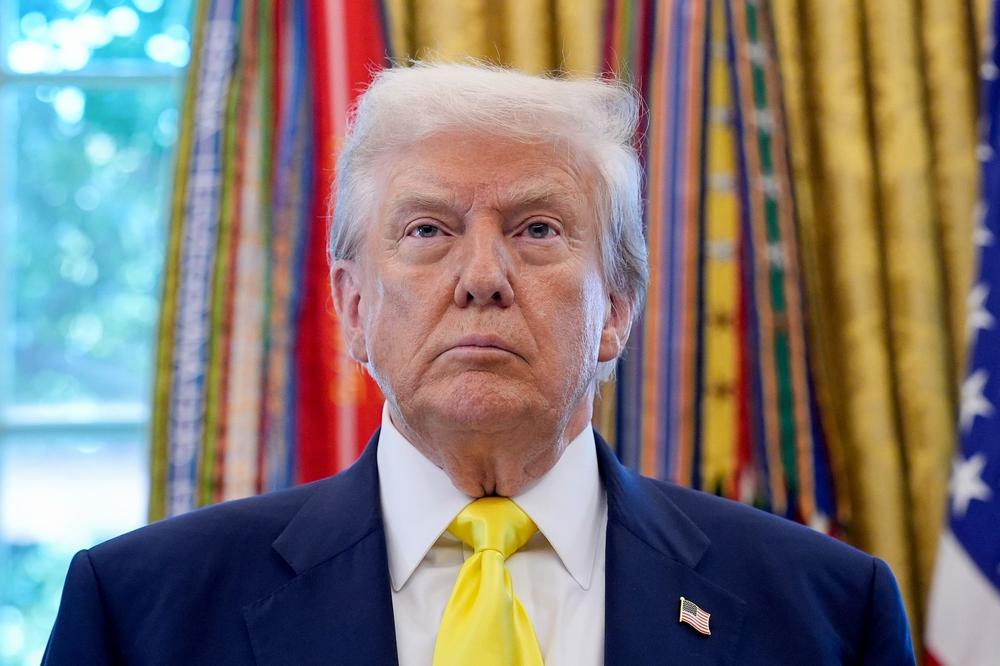U.S. President Donald Trump announced on Oct. 10 that starting next month, the U.S. will impose an additional 100% tariff on imports from China.
"The United States of America will impose a tariff of 100% on China, over and above any tariff that they are currently paying," Trump said in a post on Truth Social. "Also, on Nov. 1, we will impose export controls on any and all critical software."
Since returning to office, Trump has widely used tariffs — or the threat of them — to pursue foreign policy goals, from competition with Beijing to seeking an end to the Russia-Ukraine war.
Trump announced the new tariffs in response to China's recent move to tighten export controls on rare earth elements, critical materials used in the production of cars, smartphones, and military technology.
The U.S. president accused China of engaging in hostile trade practices and suggested he may cancel an upcoming meeting with Chinese President Xi Jinping.
In a social media post, Trump also revealed that the U.S. is preparing to restrict exports of key software technologies, further escalating economic pressure on Beijing.
Meanwhile, China has opened an antitrust investigation into U.S. tech giant Qualcomm, a move that could potentially block its planned merger with another semiconductor manufacturer.
Beijing has also introduced new port fees targeting U.S.-linked vessels, including those owned or operated by American companies.
U.S. and Chinese officials have been negotiating on a range of contentious issues in recent months, including trade restrictions, TikTok, agricultural policy, and technology exports.
A meeting between the two leaders was scheduled for this month in South Korea, but its status is now uncertain following the latest developments.
Trump announced on April 2 a sweeping plan to impose reciprocal tariffs of 10% on imports from all countries. Certain nations and trade blocs faced steeper rates: 20% for the European Union, 25% for South Korea, and 24% for Japan.
China was hit with a 34% tariff, prompting Beijing to pledge retaliatory measures. In response, Trump demanded that China reverse its planned countermeasures, warning that failure to comply would trigger an additional 50% tariff on Chinese goods.
After Beijing refused to withdraw its retaliatory measures, the U.S. imposed tariffs of 104% on Chinese imports, effective April 9. This was soon followed by an increase to 125%. At the same time, Trump announced a 90-day pause on the implementation of tariffs for other countries.
Eventually, U.S. tariffs on Chinese goods reached a peak of 145%. In May, both countries agreed to a temporary 90-day de-escalation. Under the deal, the U.S. reduced tariffs on Chinese imports from 145% to 30%, while China lowered its tariffs from 125% to 10%.
Previously, Trump also reportedly called upon G7 partners to impose their own tariffs on China and India over their purchases of Russian oil, part of a strategy of pressuring Moscow to end the war in Ukraine.
The two Asian powers have become the leading buyers of Russian oil following the outbreak of the full-scale invasion of Ukraine in 2022 and sweeping Western sanctions.
The Trump administration has already imposed 50% tariffs on Indian goods in response to its Russian energy purchases, which has fueled tensions between Washington and New Delhi.

 Honda HR-V affronta il test dell'alce: come se la cava il SUV ibrido? | Video
Honda HR-V affronta il test dell'alce: come se la cava il SUV ibrido? | Video